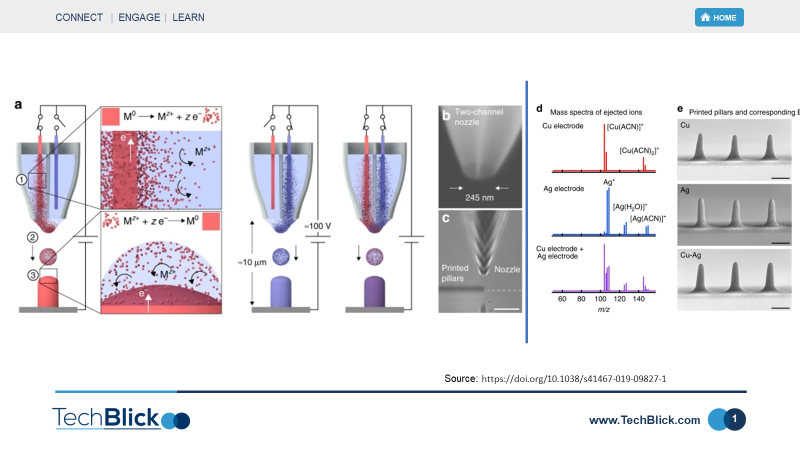At the e-Swiss conference last week we came across an interesting technology showcased in a poster. Here, the process is called "Multi-metal electrohydrodynamic redox 3D printing" and developed by R. Spolenak's team at ETH Zurich
Slide one shows the working principle: "Solvated metal ions Mz+ are generated within the printing nozzle via electrocorrosion of a metal electrode M0 immersed in a liquid solvent. (2) Ion-loaded solvent droplets are ejected by electrohydrodynamic forces. (3) Upon landing, Mz+ ions are reduced to zero valence metal M0 through electron transfer from the substrate."
As shown the metal ions are generated in a solvent from an immersed wire thus eliminating the need for a liquid formulated ink in the deposition technique. Furthermore, as seen below, the ability to print multi materials using a single voltage-controlled nozzle enables one to adjust the chemistry and composition of the deposited materials on-the-fly, thus not only enabling layer-by-layer variation of materials but also enabling much more granular changes in composition and alloying
Given that this is based on electrohydrodynamic printing- in which the droplets are injected under the application of a voltage- the feature sizes are in the sub-micron range. Slide 2 shows various examples of printed Cu structure, using the extreme control of the process as well as its excellent feature size capability
This is a very promising technology with a high potential for future development. It is of course still early stage but could it be the basis of a holy grail process which combines ink-free, micro-scale features, digital printing, and on-the-fly multimaterial compositional control?
To learn more about printing electronics join us in Eindhoven where the printed electronics community connects: https://www.techblick.com/electronicsreshaped







Comments